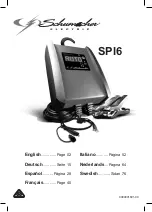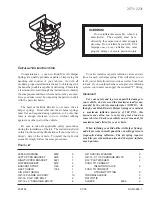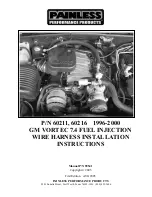
hold on to the seat belt tightly while it is adjust-
ing.
You can switch the seat belt adjustment on and
off in the on-board computer (
Y
page 231).
Seat belt warning for the driver and
front-passenger
The
7
seat belt warning lamp in the instru-
ment cluster is a reminder that all vehicle occu-
pants must wear their seat belts. It may light up
continuously or flash. In addition, a warning tone
may sound.
The
7
seat belt warning lamp goes out and
the warning tone ceases when the driver and the
front passenger have fastened their seat belts.
Rear seat belt status indicator
The seat belts on the left and centre rear seats,
when viewed in the direction of travel, are not
fastened. (Example)
The rear seat belt status indicator is only avail-
able for certain countries.
The rear seat belt status indicator informs you
which rear seat belt is not fastened.
Hiding the rear seat belt status indicator imme-
diately (
Y
page 234).
Airbags
Introduction
The installation location of an airbag is identified
by the AIRBAG symbol.
An airbag supplements a correctly worn seat
belt. It is not a replacement for the seat belt. The
airbag offers additional protection in corre-
sponding accident situations.
Not all airbags are deployed in an accident. The
different airbag systems work independently of
each other (
Y
page 53).
However, no system available today can com-
pletely eliminate injuries and fatalities.
It is also not possible to completely rule out a
risk of injury caused by an airbag due to the
speed at which the airbag must be deployed.
Important safety notes
G
WARNING
If you deviate from the correct seat position,
the airbag cannot perform its intended pro-
tective function and can even cause addi-
tional injuries when deployed. There is an
increased risk of serious or even fatal injuries.
In order to avoid such risks, always ensure
that all vehicle occupants:
R
fasten their seatbelts correctly, including
pregnant women
R
are seated correctly and maintain the fur-
thest possible distance from the airbags
R
observe the following notes
Always ensure that there are no objects loca-
ted between the airbag and the vehicle occu-
pant.
R
Adjust the seats properly before beginning
your journey. Always make sure that the seat
is in an almost upright position. The centre of
the head restraint must support the head at
about eye level.
R
Move the driver's and front-passenger seats
as far back as possible. The driver's seat posi-
tion must allow the vehicle to be driven safely.
R
Hold the steering wheel only by the rim. This
allows the airbag to be fully deployed.
R
Always lean against the backrest while driv-
ing. Do not lean forwards or lean against the
door or side window. You may otherwise be in
the deployment area of the airbags.
R
Always keep your feet in the footwell in front
of the seat. Do not put your feet on the dash-
board, for example. Your feet may otherwise
be in the deployment area of the airbag.
R
Always secure persons less than 1.50 m tall in
suitable restraint systems. Up to this height,
the seat belt cannot be worn correctly.
46
Occupant safety
Saf
ety
















































